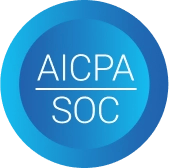SaaS tools have transformed the way businesses operate and, as we discovered in our recent research, this is especially true for sales teams who spend more on software than any other department — over a fifth of an organization’s total SaaS budget.
The issue is, these teams also tend to be far worse at utilizing the tools they are given, with less than 50% of licenses being used on a regular basis.
So, what’s the solution? What can businesses do to ensure their SaaS stack is optimized for maximum cost-savings?
To answer this, we sat down with Sebastien van Heyningen, President at Central Metric, to discuss where this problem stems from and how companies can start to think more strategically, not only about their sales stack, but their wider revenue SaaS stack.
An interview with a RevOps expert

As RevOps is such a broad topic, how would you define it to someone unfamiliar with the concept?
The way I see it, RevOps is all of the people, processes, technologies, and data points that affect the buyer journey and customer lifecycle.
RevOps is intentionally broad as it brings together all of these functions and helps align their incentives. All of these inputs have to work together to engage, educate, qualify, and convert your target prospects into clients.
If each individual function is an instrument or section, then RevOps is the entire orchestra.
“Sales tools” is also quite broad. How would you categorize these tools and what should businesses prioritize?
Agreed! Sales tools is very broad and an absolutely massive industry that seems to grow every day. We have a surplus of valuable B2B sales tools, and it can be daunting to try and figure out which one(s) will work best for your revenue organization.
At an industry level, I think of the categories in terms of actions that need to take place. For example: Sales Engagement (SalesLoft, Outreach, Mixmax), Data Provision (LinkedIn, Apollo, ExactTarget, ZoomInfo), Proposal and Contract Management (Pandadoc, Docusign). The list goes on.
If we start with what exactly needs to happen (the process) we can follow a logical path to the category and the tool that can make it happen.
Given the current economic environment, people are starting to rationalize costs. How much should revenue leaders be thinking about the return on investment for their technology?
I think more of us need to look at these pieces of technology as tools that deliver value instead of utilities that must be used, no matter what. Not enough Revenue Leaders try to measure or improve the ROI on their revenue generating technology. Which is ironic, because we’re all trying to justify the ROI of our respective solutions, without applying that logic to the tools we are using.
Whenever I consider the ROI of a new tool, I think of what that tool is changing. Is it saving us time? Let’s quantify that time. Is it improving conversion rates? How much more revenue will we bring in thanks to that?
You never want to add a cost without forecasting and working towards an output from that cost.
How often do you see duplicate tools or redundant apps within revenue SaaS stacks? And how would you recommend teams go about optimizing what they are spending on tools?
Every day! The sales and marketing teams at SaaS vendors do a much better job of building their pipeline and closing deals than they do at servicing those clients and ensuring that value is realized. If you compound that same cycle over time, you end up with a landscape filled with redundancies, underused tech, and a general lack of efficiency.
I might sound like a broken record, but the fix lies in truly understanding your process and your requirements. Before you jump into tech evaluations, you need to map out as accurately as possible the activities and outcomes that you need from a new software. That gives you the leverage you need to focus on the business case, and not be drawn in by flashy tech.
We also see that 60% of sales teams are on a tier higher than they actually require. Do you see this and how do you make sure that companies are properly utilizing their SaaS tools?
Not only are sales teams on higher tiers than they need, but they also have users that do not need access. That’s the first line of cost savings to explore. Is everyone with a seat really necessary day-to-day within this system? And are we paying for a tier that gives us features that we aren’t ready for yet?
I actually think the best way to make sure you are properly utilizing your tools is to take them out of the equation altogether and focus on process requirements. Once you have that solid foundation of what you are trying to accomplish, the answers will reveal themselves.
Finally, we see a lot of businesses pulling back on SaaS tools altogether. What do you see as the long-term impact of people reducing their SaaS or technology investments?
In the short-term, I think this will cause lots of unnecessary panic amongst SaaS tool providers but pulling back is not necessarily a bad thing. The players in the market that are not focused on delivering valuable outcomes to their clients will get sniffed out as teams downsize their tech stack. The vendors that put customer value first will succeed and continue to grow.
All the while, consulting agencies like Central Metric will continue to get new business from teams that need to optimize their processes and technology.
Partner with the right companies to optimize your RevStack
The rate at which software prices are rising is simply unsustainable for many organizations, but knowing how you can streamline costs is a great starting point for reducing your SaaS spend.
Companies like Central Metric exist to help you build a SaaS stack that can effectively support your go-to-market strategy, while ensuring you’re getting the maximum value from each tool.
Having visibility of these tools is crucial though. At Vertice, we not only provide you with total oversight of your software applications and utilization rates, but we also take the burden of buying, managing and renewing SaaS off your hands. In fact, our team of experts not only have access to exclusive pricing intel, but they also know the intricacies of SaaS purchasing from either side of the deal, meaning they know exactly what to look out for to secure you the very best deal — a far better deal than sales leaders are able to negotiate.
You can find out more about how Central Metric can help maximize your business’s revenue potential here. You can also see for yourself how much you could be saving on your annual software spend with a free cost savings analysis.

